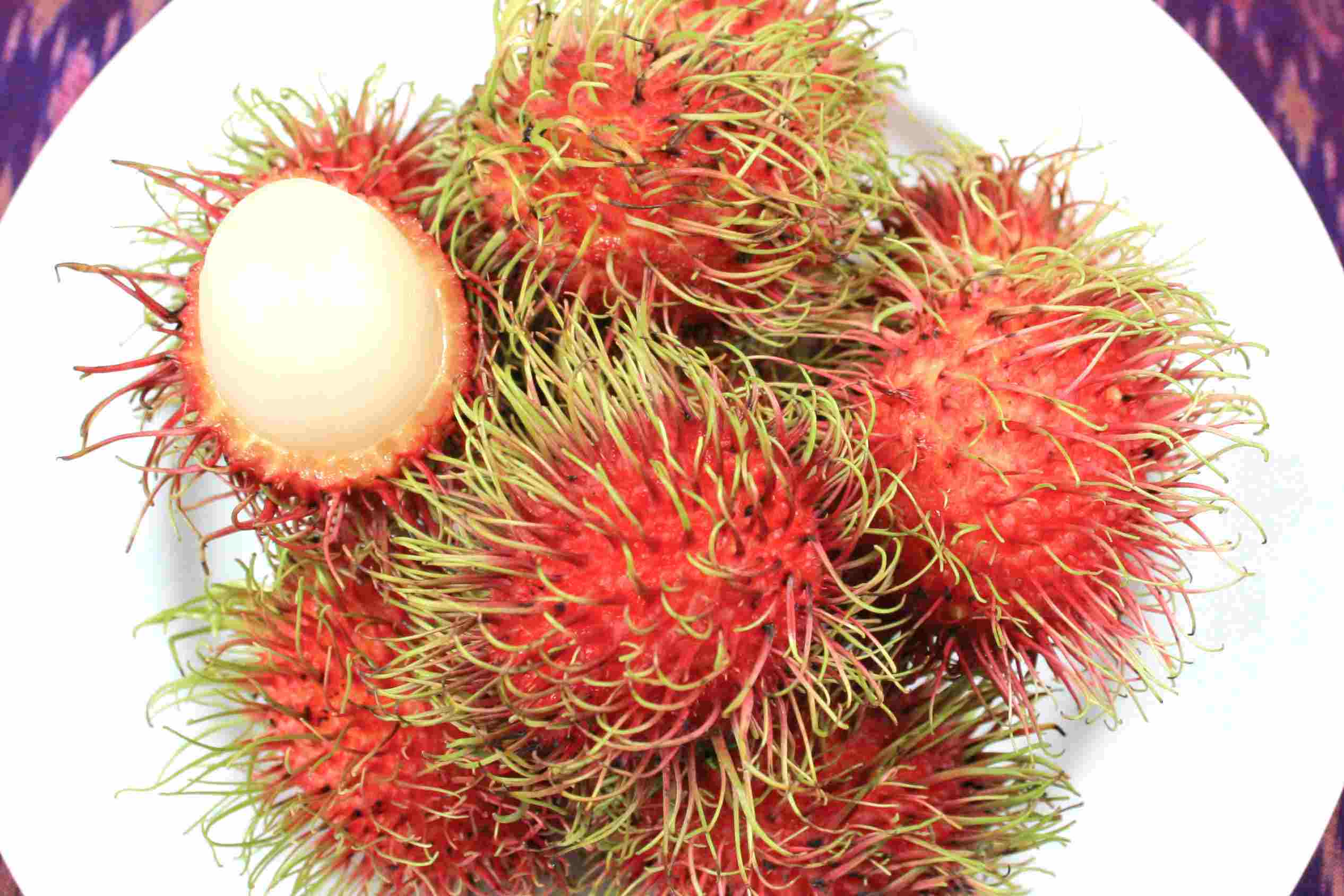
Rambutan in Indonesian, Filipino, and Malay literally means hairy caused by the "hair" that covers this fruit. The leathery skin is reddish (rarely orange or yellow), and covered with fleshy pliable spines, hence the name rambutan, derived from the Malay word rambut which means hairs. The fruit flesh is translucent, whitish or very pale pink, with a sweet, mildly acidic flavor. Rambutan is native to Malaysia, Indonesia, and Southeast Asia, although its precise natural distribution is unknown. In Thailand rambutan trees were first planted in Surat Thani in 1926 by the Chinese-Malay K. Vong in Ban Na San.
Rambutan is a tropical fruit that belongs to the soapberry family, scientifically known as Nephelium lappaceum. This delicious fruit is native to Southeast Asia, specifically Indonesia, Malaysia, and Thailand. It is sometimes referred to as "hairy fruit" because of its hairy exterior that covers the soft and juicy flesh inside.
The rambutan tree is an evergreen tree that can grow up to 20 meters in height and produces small flowers that are greenish-white in color. Once the flowers have been pollinated, small fruits begin to appear on the tree in clusters. The green fruit then turns to a bright red as it matures. On closer inspection, the fruit has a spiky, hairy shell that surrounds the fleshy and juicy core.
The flesh of the rambutan is translucent and white, and it has a sweet taste that is sometimes compared to that of a grape or a lychee. The fruit is also rich in vitamins, minerals, and antioxidants, making it a great addition to any diet. The rambutan contains high levels of Vitamin C, which helps boost the immune system and promotes healthy skin and hair. Additionally, it also contains Vitamin A, which is important for maintaining good vision and healthy skin.
Rambutan is also a good source of potassium, which is essential for maintaining healthy blood pressure and preventing heart disease. It also contains magnesium, which is important for maintaining strong bones and muscles. The fruit is also rich in fiber, which helps regulate the digestive system and prevent constipation.
One unique benefit of rambutan is its ability to protect against cancer. The fruit contains a compound called gallic acid, which has been shown to have anti-cancer properties. Additionally, it also contains other antioxidant compounds, such as ellagic acid and quercetin, which can help prevent cell damage caused by free radicals.
Rambutan is usually eaten fresh, and it is commonly served as a snack or dessert. The fruit can be easily peeled by cutting through the hairy exterior with a knife and then removing the flesh from the seed inside. The flesh can also be added to fruit salads, smoothies, or even used as a topping for ice cream.
In addition to being delicious and nutritious, rambutan also has cultural significance in Southeast Asia. In Indonesia, the fruit is often used in traditional medicine to treat various ailments such as fever, diarrhea, and dysentery. In Thailand, the fruit is offered to Buddhist monks during the harvest festival as a symbol of good fortune and prosperity.
Rambutan is a unique tropical fruit that is not only delicious but also loaded with health benefits. Its sweet taste, juicy texture, and unique appearance make it a favorite snack among many people. And with its numerous health benefits, it's no wonder that rambutan is gaining popularity among health enthusiasts and foodies alike. If you ever have the opportunity to try a rambutan, be sure to take advantage of it and enjoy this amazing fruit!